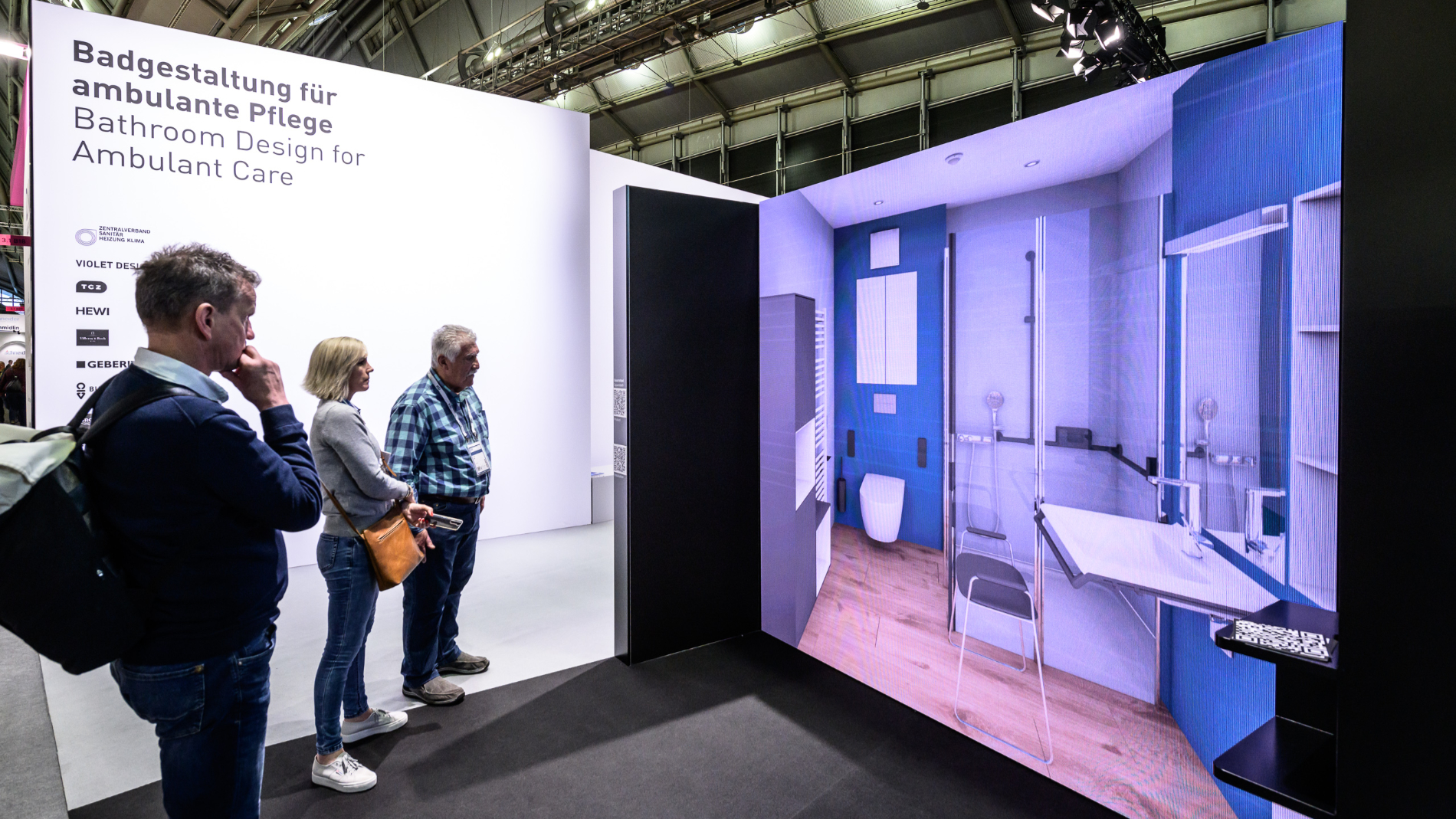Intelligent technologies to assist and support staff and users

Care-sector bathrooms in clinics, hospitals and residential-care homes have special requirements with regard to the design of the various rooms. They must be barrier-free and equipped to cater for the needs of senior citizens and the disabled, at the same time as adhering to strict hygiene and safety standards, thereby allowing patients to use them independently and comfortably.
At ISH 2025, planners and operators of care and health facilities can gain insights into the latest innovations and solutions for care-sector bathrooms.
Planning and equipping facilities to ensure maximum freedom of movement
A barrier-free bathroom is the centrepiece of every care-sector bathroom. Numerous aspects need to be considered when planning a bathroom of this kind, to ensure users have sufficient freedom of movement. According to the DIN 18040-2 standard, the area in front of the toilet, washbasin and bathtub should be big enough to allow unrestricted use by wheelchair users, people with walking frames and those with limited mobility. The height of washbasins and toilets must be set so that they can be used without difficulty. Installing height-adjustable fittings means the height can be individually set for each user.
In addition to spatial planning, the design of fixtures and fittings is also very important. Handrails and supports, standing aids and bathtubs with integrated lifts or doors contribute significantly to user safety and autonomy. Particularly important in this connection are walk-in showers, bathtubs with level access or lifts and washbasins with space underneath to facilitate access for wheelchair users.
Design and functionality in harmony
Users should also enjoy a sense of well-being in care-sector bathrooms. Consequently, modern design is no less important than product functionality and durability. Non-slip tiles, for example, are a safe alternative to mats, because they reduce the risk of tripping. Underfloor heating ensures a pleasant room temperature and keeps the floor dry, which in turn eliminates another danger of slipping and tripping.
The integration of smart technologies in care-sector bathrooms offers further liberating possibilities. Modern systems can automatically adjust the temperature and lighting and are already being integrated into intelligent toilets that can analyse bodily excretions and alert care personnel if necessary. Innovations such as these not only make life easier for patients, they also ease the burden on care personnel and give them more time for individual patient care.
Care-sector bathrooms: the key to greater independence and improved quality of life
Depending on the type of facility, care-sector bathrooms must fulfil widely varying requirements. In nursing homes, functionality is the main priority, whereas clinics and hospitals must also pay attention to hygiene and quick cleaning options. For planners and operators, it is important to find solutions that meet the special needs of the individual user groups without sacrificing comfort and design.
The design, fixtures and fittings of care-sector bathrooms have a direct impact on users' quality of life. In this context, accessibility, comfort and safety must go hand in hand. Given the right planning and the use of innovative technologies, care-sector bathrooms can become places that are not only functional but also promote patient autonomy and self-determination.
At ISH 2025, visitors will find a wealth of innovative products and solutions tailored to the special requirements of nursing homes, clinics and hospitals: from barrier-free bathrooms, hygienic and easy-to-clean surfaces to smart technologies that make everyday life easier for patients and nursing staff.
